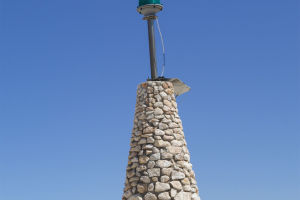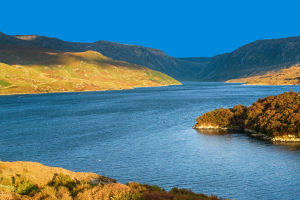Canyons are formed by soil erosion and are one of nature's most beautiful geological formations. Many people have been under the impression that the largest canyon on earth is the Grand Canyon in Arizona, USA.
But in 1994 it was confirmed that the Yarlung Tsangpo River Grand Canyon in China is the world's largest canyon, with a length of 504.9 kilometers and an average depth of more than 5,000 meters; the largest canyon in the solar system is the Mariner's Canyon, located at the equator of Mars.
Canyons are valleys where the depth is greater than the width and the slope is steeper. They generally develop in areas where tectonic uplift and the valley slopes are composed of hard rock.
Canyons tend to form when the rate of ground uplift is coordinated with downcutting. A canyon is generally a valley whose depth is greater than its width and whose slopes are very steep on both sides of the valley. Canyons are a unique expression of water's ingenuity in eroding hard rocks to form treacherous gorges, and nothing else illustrates the corrosive nature of water quite like a canyon.
By eroding the hard rock, the river carves its way through, sometimes over hundreds of years, creating incredibly large natural sculptures. Long, deep gorges are even more of a spectacle. So do you know of any of the world's other more famous canyons?
The Yarlung Zangbo Grand Canyon stretches from the village of Daduqa in Milin County (2880m above sea level) in the north to the village of Baxiqa in Murdoch County (115m above sea level) in the south. 504.6km long, with an average depth of 2268m and a maximum depth of 6009m, the Yarlung Zangbo Grand Canyon is the world's largest canyon with an average altitude of over 3000m.
The entire canyon area is a harsh environment of glaciers, sheer walls, steep slopes, mudslides, and huge rivers interspersed with huge waves. Many areas are still untouched, making it one of the 'last secret places on earth and one of the few gaps in geological work. The water and heat from the Grand Canyon's water and air corridors have created a beautiful natural environment in south-eastern Tibet, which has been described as the 'South of Tibet'.
Capertee Gorge, Australia. The largest canyon in Australia, it is famous for its rugged terrain and towering sandstone cliffs. Because of its age, Capertee Gorge is not as deep as the other gorges on this list, but it is massive and is 0.6 miles (1 km) wider than the Grand Canyon. There are many ways to really take in the majestic views of the canyon.
If you are physically fit, you can choose to hike the sandstone plateau, a walk of as little as an hour or as long as five days will give you spectacular views of the canyon and the unique features of this landscape, including monsoon rainforests, rocky country, upland swamps, woodlands, and rivers.
The Grand Canyon is a world-renowned natural wonder, with the Colorado River running through it, and has been selected by UNESCO as one of its protected natural heritage sites. Located on the Kaibab Plateau in northwestern Arizona, USA, the Grand Canyon is one of the most magnificent sights on earth.
The Colorado River cuts through 19 major canyons on the Colorado Plateau, covering a total area of 2,724.7 square kilometers, the deepest, widest, and longest of which is the Grand Canyon.
At 446 kilometers in length, it is one of the longest canyons in the world. The top of the canyon is between 6 and 28 kilometers wide and the deepest is 1,800 meters. The water at the bottom of the valley is less than 1,000 meters wide, increasing to a depth of 18 meters in the summer when the snow and ice melt water is present. The rocks are mostly red.


